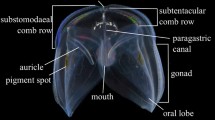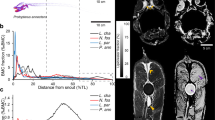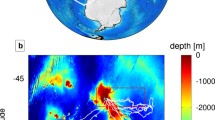Abstract
The foraging, feeding, and escape behaviors of members of four genera of oceanic ctenophores were studied by direct observation in the field during the summer of 1987 (7 July to 7 September) on R. V. “Oceanus” Cruise 191 to the Northern Sargasso and Slope water, in an area bounded by 34° to 39°N and 67° and 74°W. Patterns of water movement around these ctenophores were studied using fluorescein dye. Bolinopsis infundibulum forages vertically, capturing prey with mucus-covered oral lobes. Species of Ocyropsis forage horizontally and produce a reduced wake, due to the extreme compression of the body and the aboral location of the ctene rows. Prey are trapped by the muscular oral lobes and ingested by the prehensile mouth. In both genera, the auricles are held rigidly, and apparently are used both to reduce the pressure wave as they forage and to startle prey onto the surfaces of the oral lobes. Cestum veneris also forages horizontally, but continually reverses direction. Prey startled by the turbulent wake produced in the previous pass are captured by tentilla that stream over the sides of the body. All three species of Beroe studied swim in a spiral while foraging and produce similar wakes. Prey are ingested by the negative pressure produced by the rapid expansion of the mouth, and with the macrocilia that line the oral portion of the stomodaeum. The escape behavior of species of Bolinopsis, Ocyropsis, and Cestum appears to function primarily to elude nonvisual predators such as Beroe spp. Species of Beroe bend and swim rapidly during the escape response, and will turn themselves inside-out when repeatedly stimulated. The types of prey captured depend in part on an interplay of foraging and feeding mechanisms.
Similar content being viewed by others
Literature cited
Alexander, R. M. (1988). Elastic mechanisms in animal movement. Cambridge University Press, Cambridge, England
Anderson, E. (1974). Trophic interactions among ctenophores and copepods in St. Margaret's Bay, Nova Scotia. Ph. D. thesis. Dalhousie University, Nova Scotia
Ceccaldi, H. J. (1972). Observations biologiques de Cestus veneris. Téthys 4: 707–710
Gerritsen, J. (1984). Size efficiency reconsidered: a general foraging model for free-swimming aquatic animals. Am. Nat. 123: 450–467
Greve, W. (1972). Ökologische Untersuchungen an Pleurobrachia pileus. 2. Laboratoriumsuntersuchungen. Helgoländer wiss. Meeresunters. 23: 141–164
Greve, W., Stockner, J., Fulton, J. (1976). Towards a theory of speciation in Beroe. In: Mackie, G. O. (ed.) Coelenterate ecology and behavior. Plenum Press, New York, p. 251–258
Hamner, W. M. (1974). Blue water plankton. Natn. geogr. Mag. 146: 530–545
Hamner, W. M. (1990). Design developments in the planktonkreisel, a plankton aquarium for ships at sea. J. Plankton Res. 12: 397–402
Hamner, W. M., Strand, S. W., Matsumoto, G. I., Hamner, P. P. (1987). Observations on foraging behavior of the ctenophore Leucothea n. sp. in the open sea. Limnol. Oceanogr. 32: 645–652
Harbison, G. R. (1985). On the classification and evolution of the Ctenophora. In: Morris, S. C., George, J. D., Gibson, R. Platt, H. M. (eds). The origins and relationships of lower invertebrates. Systematics Assoc. Spec. Vol. #28. Clarendon Press, Oxford, p. 78–100
Harbison, G. R. (1991). Names of Ctenophora. Spec. Publs Am. Fish. Soc. 22: 49–51
Harbison, G. R., Madin, L. P., Swanberg, N. R. (1978). On the natural history and distribution of oceanic ctenophores. Deep-Sea Res. 25: 233–256
Harbison, G. R., Miller, R. L. (1986). Not all ctenophores are hermaphrodites. Studies on the systematics, distribution, sexuality and development of two species of Ocyropsis. Mar. Biol. 90: 413–424
Haury, L. R., Kenyon, D. E., Brooks, J. R. (1980). Experimental evaluation of the avoidance reaction of Calanus finmarchicus. J. Plankton Res. 2: 187–202
Joll, L. M. (1989). Swimming behaviour of the saucer scallop Amusium balloti (Mollusca: Pectinidae). Mar. Biol. 102: 299–305
Kerfoot, W. C. (1978). Combat between predatory copepods and their prey: Cyclops, Epischura, and Bosmina. Limnol. Oceanogr. 28: 1089–1102
Kerfoot, W. C., Kellogg, Jr., D. L., Strickler, J. R. (1980). Visual observations of live zooplankters: evasion, escape, and chemical defenses. Spec. Symp. Am. Soc. Limnol. Oceanogr. 3: 10–27
Kuhl, W. (1932). Rippenquallen beim Beutefang. Natur Mus., Frankf. 62: 130–133
Lalli, C. M. (1970). Structure and function of the buccal apparatus of Clione limacina (Phipps) with a review of feeding in gymnosomatous pteropods. J. exp. mar. Biol. Ecol. 4: 101–118
Mackie, G. O., Mills, C. E. (1983). Use of the Pisces IV submersible for zooplankton studies in coastal waters of British Columbia. Can. J. Fish. aquat. Sciences 40: 763–776
Main, R. J. (1928). Feeding mechanism of Mnemiopsis. Biol. Bull. mar. biol. Lab., Woods Hole 55: 69–78
Matsumoto, G. I. (1987). Manipulation of water flow by ctenophores (phylum Ctenophora). In: Lang, M. L. (ed.) Proceedings of the American Academy of Underwater Sciences, Coldwater Diving for Science Symposium. American Academy of Underwater Sciences, Seattle, Washington, p. 175–188
Matsumoto, G. I., Hamner, W. M. (1988). Modes of water manipulation by the lobate ctenophore Leucothea sp. Mar. Biol. 97: 551–558
Mauchline, J. (1980). The biology of mysid and euphausiids. Adv. mar. Biol. 18: 373–677
Nagabhushanam, A. K. (1959). Feeding of a ctenophore Bolinopsis infundibulum (O. F. Müller). Nature, Lond. 184: 829
Ohman, M. D. (1988). Behavioral responses of zooplankton to predation. Bull. mar. Sci. 43: 530–550
Pfitzner, I. (1962). Zur Bewegung von Cestus veneris Lesueur (Ctenophora); eine Filmanalyse. Zool. Jb. (Abt. allg. Zool. Physiol. Tiere) 69: 577–598
Reeve, M. R., Walter, M. A. (1978). Nutritional ecology of ctenophores — a review of recent research. Adv. mar. Biol. 15: 249–287
Schulze-Röbbecke, A. C. (1984). Functional morphology of Bolinopsis infundibulum (Ctenophora). Helgoländer Meeresunters. 38: 47–64
Stretch, J. J. (1982). Observations on the abundance and feeding behavior of the cestid ctenophore, Velamen parallelum. Bull. mar. Sci. 32: 796–799
Swanberg, N. (1974). The feeding behavior of Beroe ovata. Mar. Biol 24: 69–76
Tamm, S., Tamm, S. (1991). Macrociliary tooth patterns in beroid ctenophores. Biol. Bull. mar. biol Lab., Woods Hole 181: 355–356
Vogel, S. (1981). Life in moving fluids. The physical biology of flow. Princeton University Press, Princeton, N. J.
Author information
Authors and Affiliations
Additional information
Communicated by M. G. Hadfield, Honolulu
Rights and permissions
About this article
Cite this article
Matsumoto, G.I., Harbison, G.R. In situ observations of foraging, feeding, and escape behavior in three orders of oceanic ctenophores: Lobata, Cestida, and Beroida. Marine Biology 117, 279–287 (1993). https://doi.org/10.1007/BF00345673
Received:
Accepted:
Issue Date:
DOI: https://doi.org/10.1007/BF00345673




